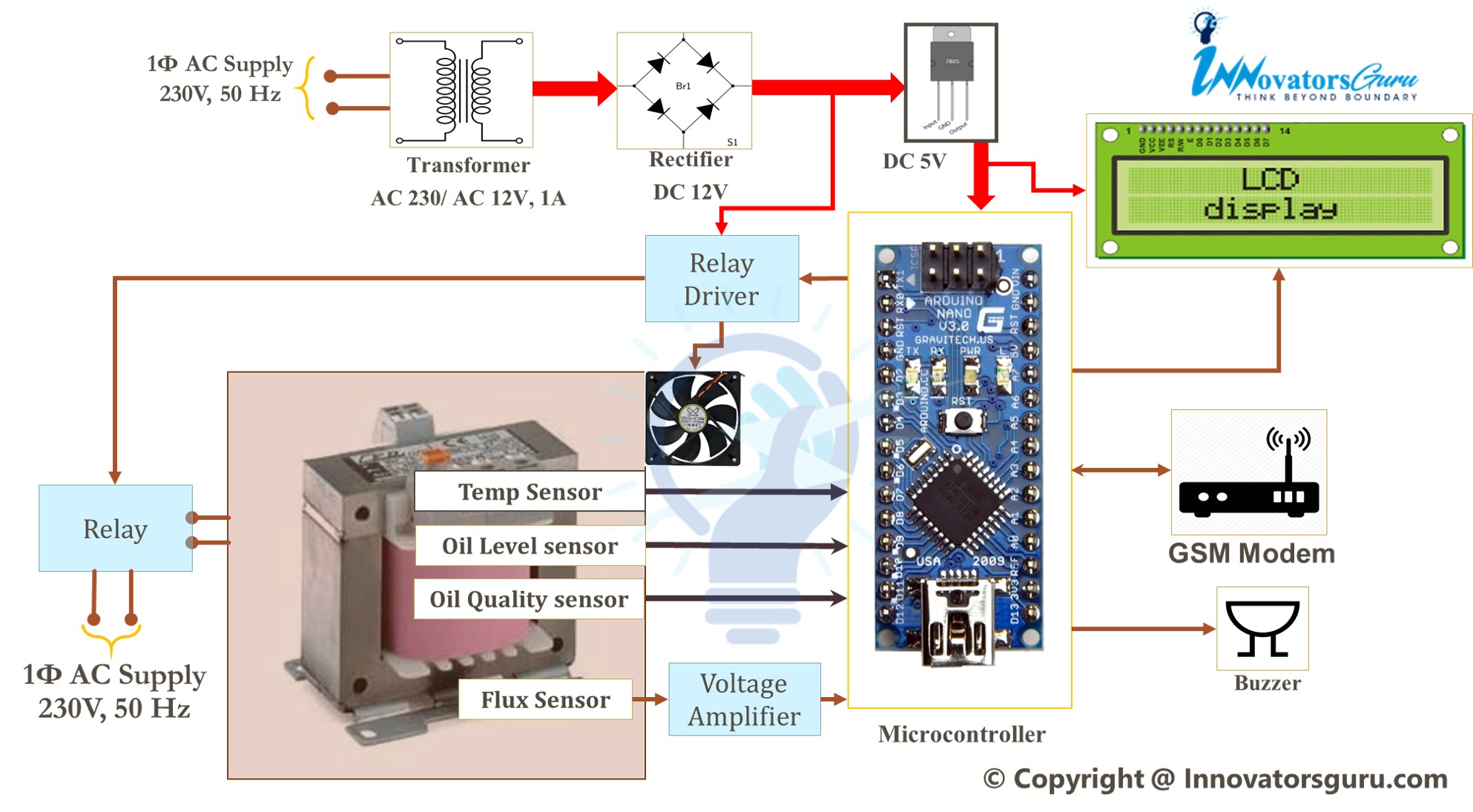Share
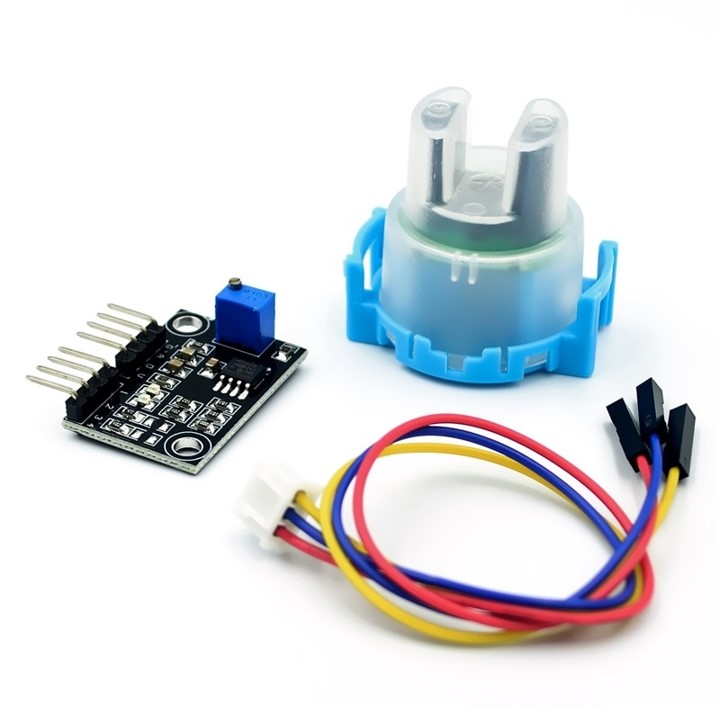
TS-300B | High Quality Arduino Turbidity Sensor
TS-300B is a High Quality Turbidity Sensor with analog and digital interface for Arduino. This is the low cost Arduino Turbidity Sensor DIY Projects.
Turbidity Sensor working Principle
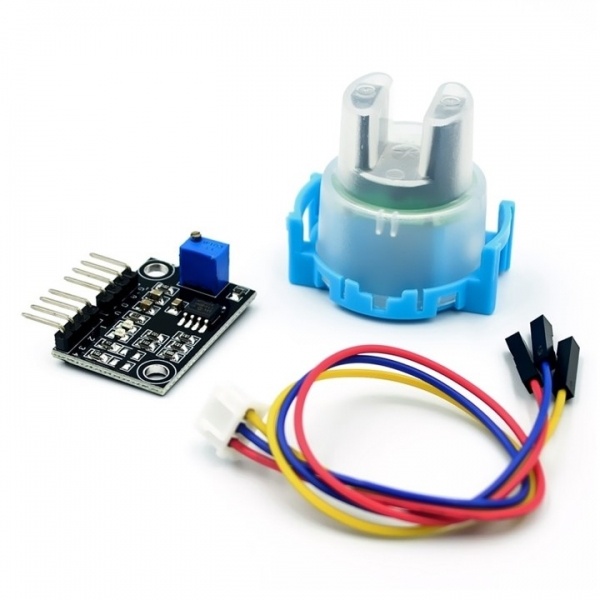
Where to Buy?
This Module is available with and without amplifire circuit in many online stores. Its price varies, but you can get only sensor for approximately $2.9 in most stores.
Check Price on Aliexpress | Banggood | Amazon.com |Amazon.in
My personal favrate for this product is Aliexpress Low Price + Wolrdwide Delivery [Select register shipping methods]
Function
The module has an analog and digital output interface. The analog quantity can be sampled by the microcontroller A/D converter to know the current water contamination. The digital quantity can be adjusted by the potentiometer on the module. When the turbidity reaches the set threshold, the D1 indicator will be illuminated, the sensor module output will change from high level to low level, and the microcontroller will monitor the level change.
Determine whether the turbidity of the water exceeds the standard, thus alerting or linking other equipment. The module is low in price, convenient to use, high in measurement accuracy, and can be used for measuring the degree of water pollution of washing machines, dishwashers, etc.; it can also be used for industrial site control, environmental sewage collection and other occasions requiring turbidity detection and control.
Specifications
- Operating voltage: 5.00V DC
- Working current: 40mA (MAX)
- Response time: <500ms
- Insulation resistance: 100MΩ (Min)
- Output mode: analog output: 0~4.5V; digital output: high/low level signal (can adjust the potentiometer to select the corresponding threshold)
- Operating temperature: -20 ° C ~ 90 ° C
- Module size: 38.6mm*22.1mm
- Sensor Interface: XH2.54 connector
- Ratio Range (NTU): 0~1000±30
- Infrared Emitting Diode: 940nm (Peak emission wavelength)
- Photo Transistor: 880nm (Peak emission wavelength)
Applications
- Washing machines,
- Dishwashers,
- industrial site control,
- environmental sewage collection
- Water quality monitoring using IOT
- Oil quality monitoring
Features
- Simple and convenient to use
- Low Cost
- Digital and analog output Mode
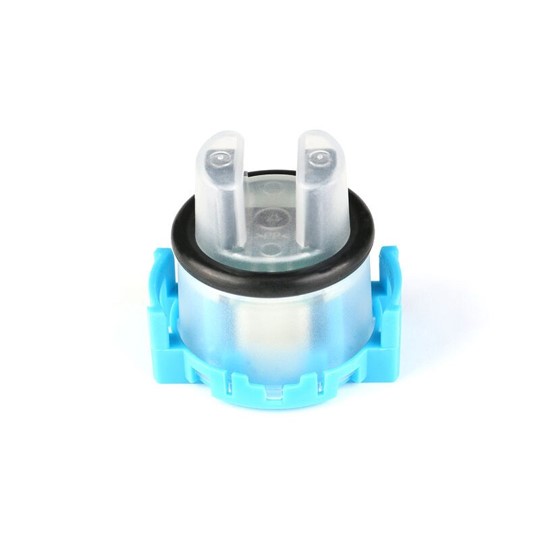
Pinout
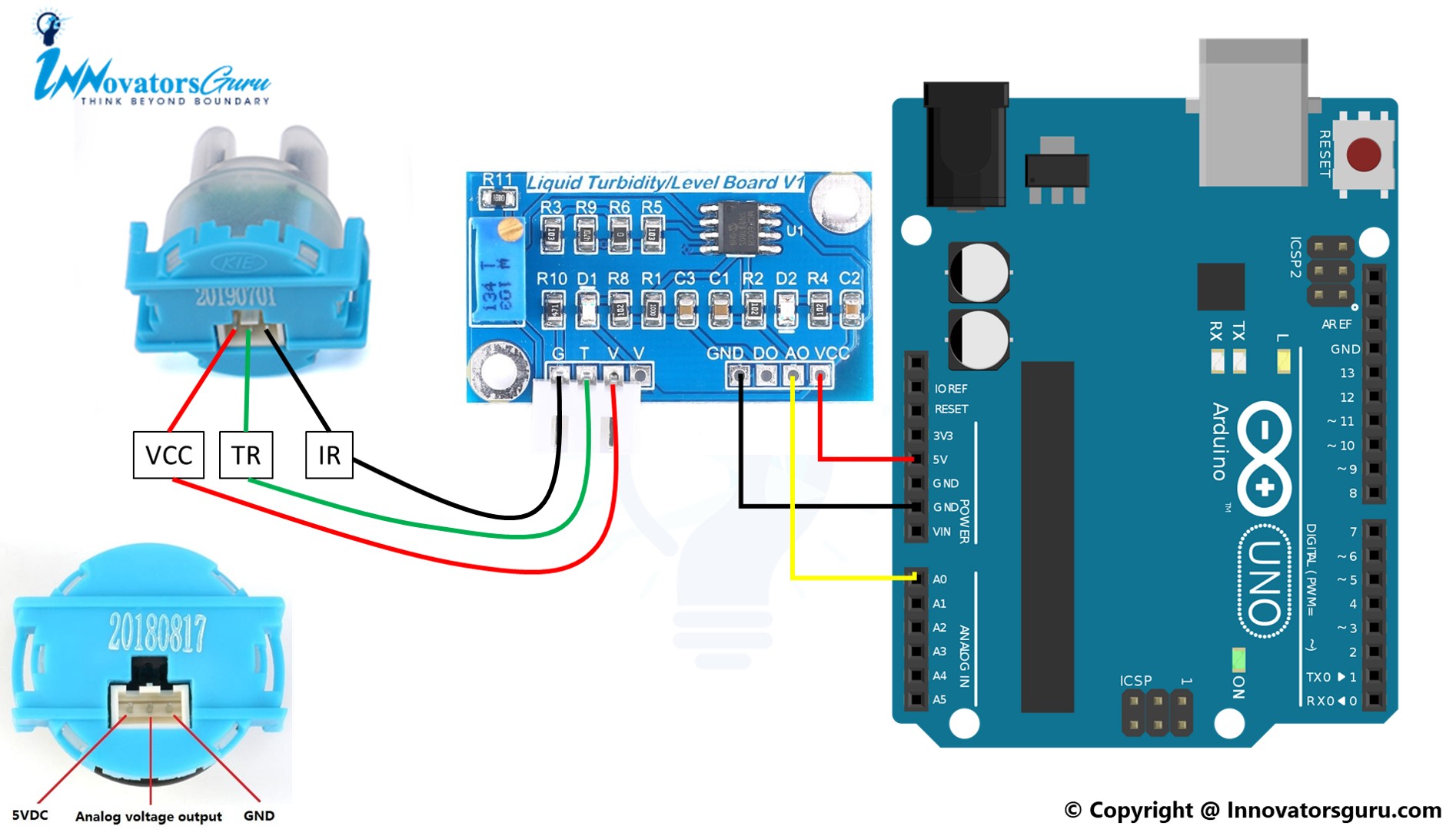
| Board Pin No | Sensor/Board Pin | Function |
|---|---|---|
| 1 | VCC | 5V |
| 2 | GND | Ground |
| 3 | A0 | Analog output Pin (0~4.5V) |
| 4 | D0 | Digital Outputt (High/Low) |
| Pin No | Sensor Pin | Arduino Pin |
|---|---|---|
| 1 | VCC | Arduino 5V |
| 2 | GND | Arduino GND |
| 3 | A0 | *Arduino A0 (Analog output mode) |
| 4 | D0 | **Arduino D2 ( Digital output mode ) |
* A0 pin of sensor is connected to Arduino analog input pin : Analog output voltage 0~4.5V [ Analog output mode ] **D0 pin of sensor is connected to Arduino Digital input pin : Digital output High or Low [ Digital output mode ] An Arduino code is available to test the module in both cases.
The above schematic of the turbidity sensor is applicable to Arduino Uno connection. In the same way, you can connect this TS-300B module to other Arduino board such as Arduino Mega and Arduino Nano.
Arduino Code [ Analog output mode ]
Arduino Code [ Digital output mode]
Select a specific turbidity contrast solution and adjust the potentiometer knob to the position where the D1 indicator light is just lit (ie, the threshold of high and low levels) to complete the threshold setting. The DO port of the sensor module is connected to the I/O port of the MCU for output signal judgment or connected to an external drive circuit to drive other devices.
Conclusion
This is a super cool water quality sensor module that enable you to monitor the turbudity of any liquid using Arduino, without spending too much budget..
*sometimes it can be tricky while detecting the Forward gesture.
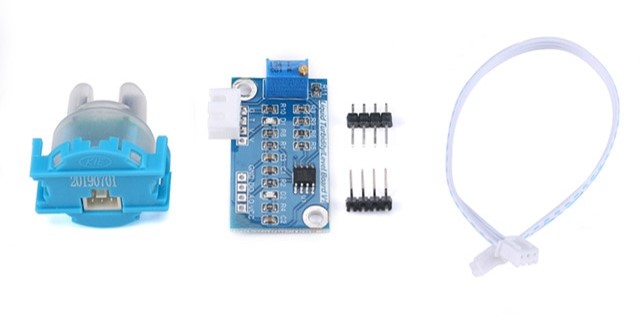
More great Projects using Turbidity Sensor
More great stories from InnovatorsGuru
- Dual Axis Solar tracking System Using GPS
- Automatic Power factor control
- IoT Project Ideas
- Core Electrical Engineering Projects
- Capacitor Bank Calculation For APFC Panel
- Simple Electrostatic Precipitator design
- Switching high voltage load using TRIAC
- Latest Seminar Topics for Electrical Engineering Students
by InnovatorsGuru
Share
STAY IN THE LOOP


